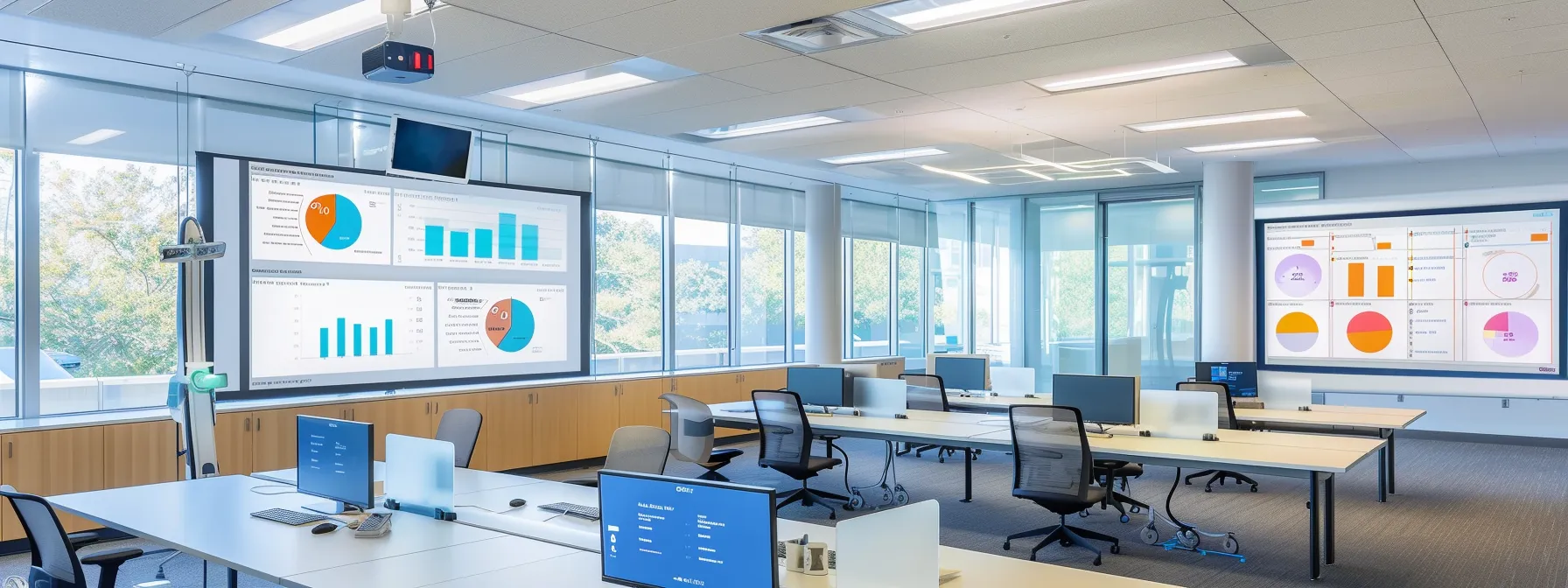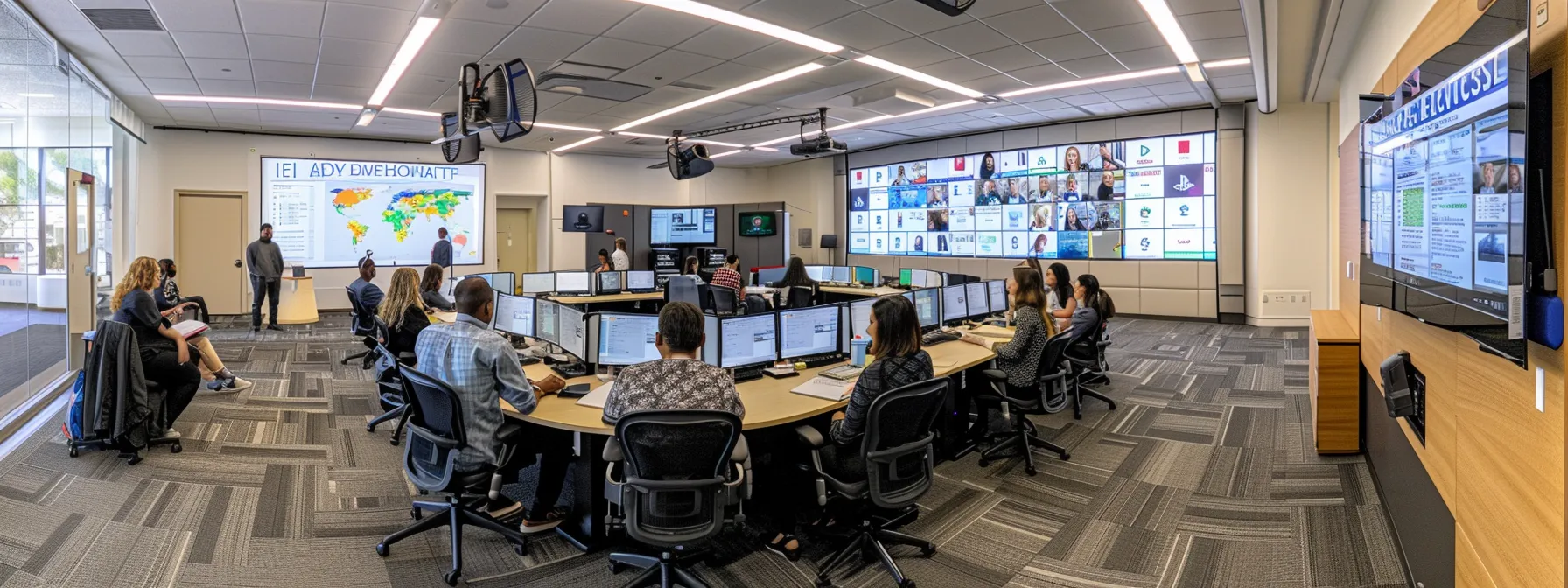Table of Contents for Medical Billing Optimization Strategies
Effective Approaches to Optimize Medical Billing Practices for 2025
As the healthcare industry continues to evolve, optimizing medical billing practices becomes increasingly crucial for healthcare providers looking to enhance efficiency and ensure financial stability. Effective approaches to streamline these processes in 2025 will likely center around the integration of advanced technologies, such as artificial intelligence (AI) and machine learning, which can automate many aspects of billing. By leveraging AI-driven software, healthcare providers can reduce the incidence of human error, enhance claim accuracy, and improve the speed of billing cycles. Additionally, the utilization of practice management software enables seamless integration of patient data with billing systems, fostering a more efficient workflow that minimizes discrepancies and delays in payment.
Another essential approach to optimizing medical billing practices is ongoing staff education and training. As regulations and payer requirements evolve, ensuring that billing personnel are well-versed in the latest coding practices and compliance guidelines is vital. This can be achieved through regular training sessions, workshops, or online courses that keep the team informed about best practices and emerging trends in medical billing. Furthermore, fostering a culture of transparency and communication within the billing department can lead to quicker resolution of issues and improved collaboration across the organization. By adopting these strategic methods, healthcare providers in 2025 can enhance their billing processes, reducing costs and improving overall patient satisfaction. Current procedural terminology
Medical billing practices are evolving, and effective strategies for 2025 are critical. This article discusses trends in medical billing, efficient claims management, and compliance and risk reduction. The reader will learn how to boost revenue, improve cash flow, and reduce administrative burdens using proven solutions. Addressing common billing challenges, the article offers practical tips and clear benefits that help streamline operations for primary care providers.
In any comprehensive analysis or discussion, key takeaways serve as a distilled essence of the content presented. These highlights encapsulate the main ideas, insights, or lessons learned from the material, providing readers with a clear and concise reference that enhances their understanding. Typically, key takeaways are framed to emphasize critical points that can be applied in practical scenarios or used as a basis for further discussion. They are particularly valuable in helping individuals quickly grasp the overarching themes without delving into exhaustive details, making them an essential tool for busy primary care physician s.
Moreover, effective key takeaways can foster retention of information. By summarizing complex information into digestible bites, they aid readers in recalling the significant aspects of the content long after they’ve engaged with it. This is particularly beneficial in educational contexts, where the retention of knowledge is paramount. Key takeaways not only streamline the learning process but also empower readers to apply the insights gained in real-world situations, enriching their personal or professional lives. In essence, they bridge the gap between information overload and actionable knowledge, underscoring the importance of clarity and focus in primary care communication.
- Telehealth improves patient data management and billing processes
- EHR integration boosts operational accuracy and compliance with regulatory standards
- Artificial intelligence reduces billing errors and accelerates claim processing
- Continuous training and audits support strong compliance and risk management
- Outsourcing can streamline administrative tasks and improve financial performance
Understanding Current Trends in Medical Billing Practices
Telehealth’s role in billing transforms contract management and pricing strategies. Regulatory changes and updates to the healthcare current procedural terminology influence procedures for each medical specialty. EHR integration streamlines transactions, and artificial intelligence helps limit denied claims, offering practical insights for improved efficiency. Primary care physician s play a crucial role in this evolving landscape.
Analyze the Impact of Telehealth on Billing
Telehealth reshapes billing procedures by simplifying patient information management and reducing errors in practice management; its integration improves revenue cycle management while enabling physicians to access real-time updates that guard against health care fraud: health insurance portability and accountability act health insurance protected health information
- Simplified patient information handling
- More efficient practice management
- Enhanced revenue cycle management outcomes
- Stronger safeguards against health care fraud
- Streamlined processes for physicians
This modern approach allows practices to reduce billing delays and minimize claim denials effectively, ensuring that physicians and administrators benefit from clear operational insights and increased financial stability.
Identify Regulatory Changes Influencing Medical Billing
Regulatory updates now require practices to re-evaluate their billing approaches, making it essential to integrate robust medical billing software and benefit from practice management consulting. These changes have prompted many firms to consider outsourcing and careful audit procedures to sustain revenue and compliance in the healthcare industry. This includes adhering to the health insurance portability and accountability act.
Providers must stay informed of adjustments in coding and documentation standards, which are key factors affecting audit outcomes and revenue streams. With clear guidance from practice management consulting, practices can leverage medical billing software and outsourcing strategies to meet new reimbursement regulatory demands effectively.
Explore EHR Integration for Streamlined Processes
Integrating EHR systems simplifies work processes and improves data management, making it easier for practices to comply with** law** requirements and ensure accurate medical associates billing. This integration assists providers in tracking patient insurance details and managing health care part claims efficiently, ultimately reducing administrative burdens and streamlining operations.
EHR integration supports swift access to health insurance data, enabling rapid verification of patient insurance eligibility and claim status. This technology enhances overall operational accuracy, ensuring physicians maintain clear records and achieve better reimbursement outcomes with medicare part submissions and medical associates billing practices.
Assess the Role of Artificial Intelligence in Billing Automation
Artificial intelligence in billing automation significantly improves the billing process by streamlining data entry, managing accounting tasks, and enhancing accuracy in coding using current procedural terminology codes. This technology integrates with ehr and billing systems to verify diagnosis details and reduce the time spent on manual tasks, leading to faster claim submissions and fewer errors:
The adoption of artificial intelligence in billing automation offers robust actionable insights, providing practical examples that demonstrate value in real-world scenarios. This approach drives measurable improvements in accounting precision, supports the management of current procedural terminology, and optimizes diagnosis accuracy, ensuring a smoother billing process across health care provider medical practices.
Strategies for Efficient Claims Management
Effective strategies include setting clear submission protocols, immediate follow-ups on denials, using advanced coding techniques based on current procedural terminology, and incorporating data analytics. These approaches protect protected health information, support every employee, and clarify the reason for adjustments in radiology billing. Each topic offers practical insights that drive improvements in claims management efficiency.
Establish Clear Protocols for Claims Submission
The clear establishment of claims submission protocols ensures that every health care provider maintains precise documentation that meets the requirements of the health insurance portability and accountability act, facilitating efficient billing management. Such protocols also support the operational standards recommended by the healthcare common procedure coding system, which helps reduce rejections and streamlines ** medicaid** billing processes.
By setting defined submission guidelines, practices improve collaboration among human resources teams and administrative staff to ensure consistent operational performance. This practical approach enables smoother interactions between front office and billing departments, ultimately boosting revenue stream reliability and minimizing delays in reimbursement resolution. Current procedural terminology healthcare common procedure coding system.
Implement Immediate Follow-Up on Denials
Implementing prompt follow-up on claim denials significantly boosts efficiency by addressing errors before they accumulate. This proactive method leverages detailed knowledge of nursing documentation and billing procedures, ensuring that every discrepancy is quickly examined, which improves overall workflow and revenue recovery.
Immediate denials follow-up fosters higher efficiency in the revenue cycle by reducing delays and increasing claim accuracy. The team applies extensive knowledge from nursing practices and thorough exam feedback to streamline processes, reinforcing a structured workflow that minimizes future denials and accelerates financial turnaround in the healthcare industry. The healthcare common procedure coding system.
Incorporate Advanced Coding Techniques
Incorporating advanced coding techniques streamlines billing practices by increasing accuracy and ensuring compliance with medicaid regulation standards, which supports each medical practice in precise claim submissions for every physician. This focused approach helps reduce errors and supports effective financial outcomes:
- Accurate code selection for procedures
- Consistent compliance with regulation standards
- Improved claim rejection rates
- Better revenue collection and management
Employing updated coding procedures provides actionable insights that empower each medical practice to address recurring issues while aligning physician processes with current requirements. These strategies help reduce claim errors, support regulatory compliance, and ultimately optimize billing practices for better financial stability.
Leverage Data Analytics for Continuous Improvement
Data analytics provides practical insights that enable healthcare practices to identify patterns in claims management, especially in service areas such as outpatient department billing. This clear data-driven approach helps pinpoint irregularities associated with disease treatments and supports refined customer service strategies while streamlining accounts receivable processes within healthcare facilities.
Sophisticated analytics further deliver actionable results that assist practices in overcoming challenges specific to nursing home claims and other specialized billing segments. This method improves overall claim processing accuracy and enhances operational coordination, allowing healthcare providers to address financial uncertainties with confidence.
Enhancing Patient Experience in Billing
Optimizing medical billing for 2025 builds on simplifying patient billing statements, offering flexible payment options, and providing clear charge communication. This approach aids health care providers, supports dental billing and coding, and reduces debt while integrating technology for patient engagement. It further strengthens medical coding accuracy and patient portal service efficiency.
Simplify Patient Billing Statements
Physician practices can improve clear communication and efficiency by simplifying patient billing statements, which helps reduce confusion around charges and supports compliance with the affordable care act. Through tools like Kareo practice management and integrated EHR billing systems, practices refine their medical coding practice while easing patient concerns about bill accuracy and transparency. Additionally, the use of primary care portal enhances the overall experience by allowing patients to access their billing information effortlessly.
Accurate patient billing supports pain management strategies by eliminating billing delays and reducing errors that hinder cash flow. A streamlined billing process not only reinforces trust with patients but also empowers practices to achieve better financial outcomes through efficient use of technology and adherence to best practices in medical coding current procedural terminology .
Offer Flexible Payment Options
Medical billing practices that offer flexible payment options support effective revenue management while addressing patient concerns. Such strategies help surgical practices, including orthopedic surgery and anesthesiology, meet payment needs with clarity, improving adherence to payment plans and boosting overall financial performance.
Flexible payment options also benefit primary care physicians by reducing barriers to immediate care and expediting revenue collection. This approach aligns patient satisfaction with operational efficiency, ensuring practices maintain steady financial performance while meeting the specific needs of each medical specialty.
Provide Clear Communication Regarding Charges
Clear communication regarding charges plays a vital role in ensuring patients understand every detail related to their medical bills, such as copayment arrangements and medication costs. This transparency helps practices offer proactive financial assistance to address any concerns, benefiting both primary care physician s and their patients.
Effective charge communication minimizes confusion and builds trust, encouraging patients to review statements and verify charges promptly. By providing detailed explanations of copayment requirements and medication fees, medical billing professionals empower patients to manage payments confidently while seeking necessary financial assistance when needed.
Utilize Technology for Patient Engagement
Ascendant medical employs modern technology to engage the healthcare patient effectively, ensuring quick access to billing details and support services, even during an emergency. This approach empowers the primary care physician to manage billing concerns smoothly while maintaining clarity and transparency for every patient.
The integration of digital tools in Ascendant Medical’s billing systems enhances communication and improves patient engagement by offering real-time updates and direct assistance. This advanced strategy supports healthcare providers in addressing billing issues with precision, ensuring that each patient receives the clear, actionable feedback they need for optimal care management through the patient portal.
Empowering Staff for Better Billing Practices
Investing in dedicated training programs, promoting accountability, enhancing collaboration with clinical staff, and instituting regular performance reviews builds a strong foundation for billing success. This approach, strengthened by electronic health record integration and rigorous certification standards, helps medical billing companies inject efficient training strategies for sustainable, improved reimbursement outcomes, particularly in primary care.
Invest in Training Programs for Billing Personnel
Investing in training programs improves billing practice accuracy and strengthens compliance with policy standards, while minimizing fraudulent activities. Comprehensive training equips billing personnel to analyze claims effectively, ensuring that even emergency department transactions adhere to the highest standards of professionalism and integrity.
Continuous education boosts staff proficiency in managing complex billing tasks and aligning with updated industry policy guidelines. This practical approach directly supports the reduction of fraud and streamlines the processing of claims, leading to improved outcomes in both emergency department and overall practice settings.
Foster a Culture of Accountability in Billing
Establishing clear policies around private practice billing services promotes accountability across all billing departments, ensuring every step from medical record management to balance billing is precise and efficient. The practice’s commitment to transparent explanation of benefits details provides a reliable framework to prevent mismanagement and elevate compliance in specialized areas like urology.
A structured approach reinforces a culture of accountability by incorporating routine audits and team reviews to address discrepancies immediately:
Encourage Collaboration Between Billing and Clinical Staff
Effective collaboration between billing and clinical staff drives improved outcomes in the healthcare industry through streamlined processes and better interoperability between systems like current procedural terminology platforms, ensuring accurate charge credit and optimal surgery scheduling in the health care:
- Shared training sessions
- Regular interdisciplinary meetings
- Joint problem-solving on billing discrepancies
This practical approach reduces errors and enhances credit allocation by aligning the goals of both teams, thereby addressing daily challenges and reinforcing a culture of accountability in the health care industry.
Implement Regular Performance Reviews
Regular performance reviews offer clear insights into the medical billing process and help the organization mitigate risk while aligning with AAPC standards and proper current procedural terminology usage. This practice provides the team with actionable steps to address inefficiencies:
- Evaluation of existing risk management protocols
- Assessment of adherence to AAPC guidelines
- Review of CPT coding procedures
- Identification of process improvements within the organization
Performance reviews drive continuous improvement by allowing management to pinpoint specific areas that hinder billing accuracy. These reviews leverage practical examples and industry expertise to refine processes, reduce risk, and bolster overall efficiency in medical coding practices.
Compliance and Risk Management in Medical Billing
Medical practices can optimize billing by staying updated on health care regulations and conducting regular audits. A clear risk mitigation plan minimizes claim errors while proper documentation improves reimbursement and payroll. Integration with Medisoft EHR and automation supports effective claim management, setting the stage for robust compliance and risk management strategies.
Stay Updated on HIPAA Regulations
Staying updated on health insurance portability and accountability act regulations is vital for managing risk and ensuring secure communication across healthcare organizations. Medical practices build solid credential frameworks that support patient portal management and improve overall productivity, especially when integrating systems like Medisoft EMR:
- Enhanced credential verification processes
- Streamlined patient portal access and management
- Effective communication protocols for staff
- Improved productivity through automated Medisoft EMR tools
Integrating Medisoft EMR technology and continuous staff training helps organizations maintain compliance while boosting operational efficiency. This approach ensures that every team member remains up-to-date with health insurance portability and accountability act standards, resulting in clear communication practices and measurable productivity enhancements.
Conduct Regular Audits on Billing Processes
The team at Ascendant Medical conducts regular audits on billing processes to ensure compliance and manage risk effectively, utilizing practical examples such as verifying deductible amounts and checking cardiology claims. Detailed audits include a review of anesthesia procedures and** current procedural terminology** claims to prevent errors related to accounts receivable, ensuring each element of the billing cycle operates efficiently.
Regular audits offer clear insights into potential gaps and risk areas, allowing the organization to optimize operations and meet evolving regulatory standards. This approach empowers practices to handle deductible calculations accurately and maintain precise documentation for anesthesia and cardiology procedures, while also reinforcing transparent cash management and reimbursement claim processing.
Develop a Risk Mitigation Plan for Billing Errors
Developing a comprehensive risk mitigation plan for billing errors equips practices with the tools needed to secure a steady cash flow. Ascendant Medical strategically reviews billing processes, ensuring every claim meets current standards while identifying potential risks before they impact operations.
This targeted approach reduces discrepancies in cash flow management and strengthens compliance. Medical billing professionals implement routine process checks and use real-time data insights to prevent errors, thereby promoting accuracy and financial stability.
Ensure Proper Documentation for All Claims
Accurate record keeping for every claim is crucial in maintaining compliance and managing risks effectively. Detailed documentation supports precise verification of medical procedures and billing accuracy, reducing claim errors for practices: health care provider
Thorough record keeping improves financial performance by streamlining audit processes and supporting consistent claim submissions. This approach provides medical practices with a practical framework to address documentation challenges and strengthen revenue cycle management for a smoother billing practice in 2025. Additionally, it ensures compliance with the health insurance portability and accountability act.
Outsourcing Medical Billing: Pros and Cons
The discussion evaluates when to outsource billing functions, identifies reliable medical billing services, reviews cost implications, and explains how to monitor outsourced performance. This framework provides practical insights that help practices maintain efficiency and manage expenses effectively. Each aspect offers valuable guidance for optimizing medical billing practices in 2025. Medical coding and primary care physician.
Evaluate When to Outsource Billing Functions
Outsourcing billing functions can be a strategic decision for practices aiming to reduce administrative tasks and improve operational efficiency. This approach is particularly beneficial for high-volume practices that seek to free up internal resources to focus on patient care, ensuring a smoother cash flow and more accurate claim submissions: law
- Streamlined administrative processes
- Access to billing expertise and updated technology
- Improved financial performance through faster claims turnaround
When evaluating the need to outsource billing, practices consider factors like cost-effectiveness, scalability, and the ability to adapt to regulatory changes. A thorough review of current operational challenges and financial goals guides informed decisions that drive better accounts receivable cycle management in 2025. Current procedural terminology
Identify Reliable Medical Billing Services
Reliable medical billing services offer customized support that meets a practice’s specific financial and operational goals. Providers focus on proven expertise, technological integration, and responsive support to ensure smooth claim submissions and accurate coding; key qualities include reimbursement: medicare advantage
- Expert knowledge in medical billing
- Seamless integration with existing systems
- Timely and transparent reporting
Assessing these billing services involves reviewing performance metrics, client testimonials, and compliance with updated healthcare regulations. This approach enables practices to reduce administrative burdens and secure financial stability while ensuring efficient patient billing outcomes.
Understand Cost Implications of Outsourcing
In assessing the cost implications of outsourcing, practices can achieve a clearer view of their financial commitments and savings potential. Evaluating outsourcing expenses against internal processing costs provides a solid basis for informed decision-making, allowing practices to allocate resources toward patient care and operational improvements.
Expert teams often review cost factors such as contract fees, technology investments, and performance incentives when selecting an outsourcing partner. This method aids practices in predicting financial outcomes accurately, ensuring that the chosen service model aligns with their long-term revenue goals and operational needs in the primary care provider industry.
Monitor Performance of Outsourced Billing Services
Monitoring outsourced billing services is essential for ensuring that practices meet financial objectives and maintain compliance with regulatory standards. The process involves using real-time performance tracking and detailed reporting tools that provide clear insights into claim accuracy, processing times, and overall financial outcomes.
Effective performance monitoring provides actionable feedback that allows practices to address bottlenecks and improve billing efficiency. Regular performance reviews and data-driven adjustments support cost control while ensuring that outsourced billing operations align with the strategic goals of maximizing revenue and reducing administrative burdens.
Frequently Asked Questions
What are current trends in medical billing practices?
At Ascendant Medical, trends focus on automation via AI and RPA, real-time claims tracking, seamless EHR integration, and optimized denial and aged accounts receivable management, enhancing revenue and reducing administrative burden.
How can claims management be improved efficiently?
Streamlining claims management through AI automation, data analytics, and real-time reporting minimizes errors, lessens denial trends, and boosts revenue cycle performance while reducing administrative burdens in medical billing services, particularly in reimbursement and accounts receivable.
How does billing affect patient experience?
Clear, accurate billing improves patient experience by reducing confusion and administrative burdens. Efficient medical billing systems ensure prompt communication of charges, fostering trust and allowing patients and providers to focus on quality care and effective revenue cycle management.
What training boosts staff billing performance?
Specialized revenue cycle management and medical billing training builds staff knowledge of payer policies, streamlines claims processing, and reduces denials while enabling transparent, real-time reporting to boost revenue and financial outcomes in the health care industry.
What are the pros and cons of outsourcing billing?
Outsourced billing offers streamlined operations, modern systems, and expert compliance, reducing practice administrative tasks; yet, it may bring challenges in personalized service, direct control, and communication consistency that could impact responsiveness and customization.
Effective approaches set clear billing protocols that boost process accuracy and support rapid claims resolution. Integrating advanced technology with streamlined patient and provider communication drives performance improvements across the billing cycle. Collaboration between billing and clinical teams reinforces accountability and facilitates efficient revenue recovery. Optimized medical billing practices secure steady cash flow and align with evolving regulations, preparing practices for a successful reimbursement medicare advantage 2025.






